Have you grumbled trying to pick the right potting mix for your pothos? I’ve been there, puzzling over options wondering what blend of drainage, moisture-retention and nutrients would make my vines flourish. But no more confusion! After learning what these trailing plants crave soil-wise, I’m sharing DIY Pothos Soil Mix Recipe: Growing Gorgeous Pothos – the need-to-know guide for concocting the perfect soil blend tailored to their needs at home. Whether you’re new to nurturing an indoor pothos, or a seasoned grower aiming for next-level lushness, prepare to understand exactly how to craft a growing foundation that nourishes robust roots and vibrant leaves. From exploring soil ingredients, to proper proportions, to understanding pothos preferences, this is the methodology for creating ideal, customized soil. Let’s grow happy soil and happy plants!
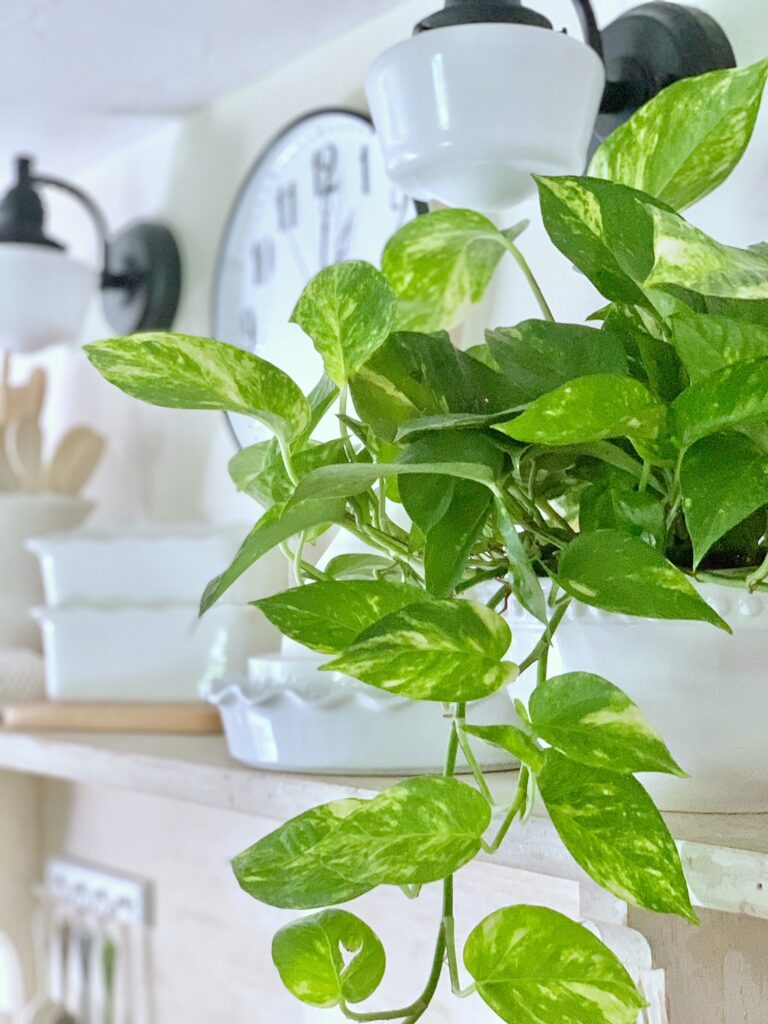
*This post includes affiliate links, for more info on affiliate links visit here
7 Fast Facts for Fabulous DIY Pothos Soil
For those seeking quick guidance without reading the full post, these 7 condensed takeaways encapsulate the vital knowledge on creating ideal pothos soil – though be sure to check the post for more context on these cliff note basics!
- Quality soil is crucial for your pothos plant’s nutrient absorption, root health, and overall well-being.
- Maintaining the right pH level in the soil (6.0 to 7.0) is essential for nutrient absorption and healthy leaves.
- The perfect pothos soil mix includes coconut coir, orchid bark, sphagnum peat moss, perlite, coarse sand, horticultural charcoal, organic materials, and synthetic fertilizer or fish emulsion.
- Adequate soil aeration, achieved through this mix, promotes root health, oxygen supply, and prevents waterlogging.
- Repot your pothos when the roots outgrow the pot or start poking through the drainage holes.
- Regularly test and adjust the soil’s pH level as needed for optimal growth.
- When it comes to soil mix, remember that happy soil leads to happy, healthy pothos plants!
Pothos Plants and Their Ideal Soil
First things first, let’s talk about pothos plants. These tropical plants, also known as Epipremnum aureum or devil’s ivy, are known for their ability to tolerate a wide range of growing conditions. Their hardiness, versatility, and low-maintenance qualities make them a favorite among indoor plant enthusiasts and an excellent option for new plant parents! But as with any plant, the right kind of soil is essential for its growth and overall health. Pothos plants prefer well-draining soil that is rich in organic matter and has good drainage1. So, if you’re eager to learn how to provide your pothos with the exceptional soil it deserves, keep reading. We’re about to unveil the secrets of creating a soil mix that will have your Pothos looking its absolute best.
Why Quality Soil Matters for Your Pothos Plant
- Nutrient Absorption: Quality soil provides essential nutrients for healthy growth and development.
- Root Health: Well-structured soil supports robust root systems, crucial for overall plant stability and nutrient uptake.
- Water Retention and Drainage: Properly balanced soil retains adequate moisture while allowing excess water to drain, preventing root rot and waterlogged conditions.
- Aeration: Well-aerated soil enables the roots to access oxygen, promoting cellular respiration and supporting metabolic processes.2
- Disease Prevention: Quality soil reduces the risk of diseases and infections by maintaining a clean and suitable environment for the plant.
- pH Regulation: Soil can influence and maintain the optimal pH level, critical for nutrient absorption and plant health.
- Structure and Stability: A good soil structure provides stability to the plant, ensuring it stays upright and well-supported.
- Moisture Balance: The right soil composition helps in maintaining an ideal balance of moisture, preventing drought stress or excessive watering.

The Benefits Of Making Your Own Pothos Soil Mix
Why settle for a mediocre potting mix when you can be a soil mixologist and create the perfect blend for your pothos plant? Making your own soil mix allows you to cater to the specific needs of your plant, ensuring it gets the right balance of moisture retention, drainage, and essential nutrients. Plus, it’s a fun and rewarding DIY project that allows you to unleash your inner gardener. And let’s be real, who doesn’t love getting their hands dirty and playing with dirt? So, ditch the pre-mixed soil and make your own potting mix for your pothos plant. Your green friend will thank you for it!
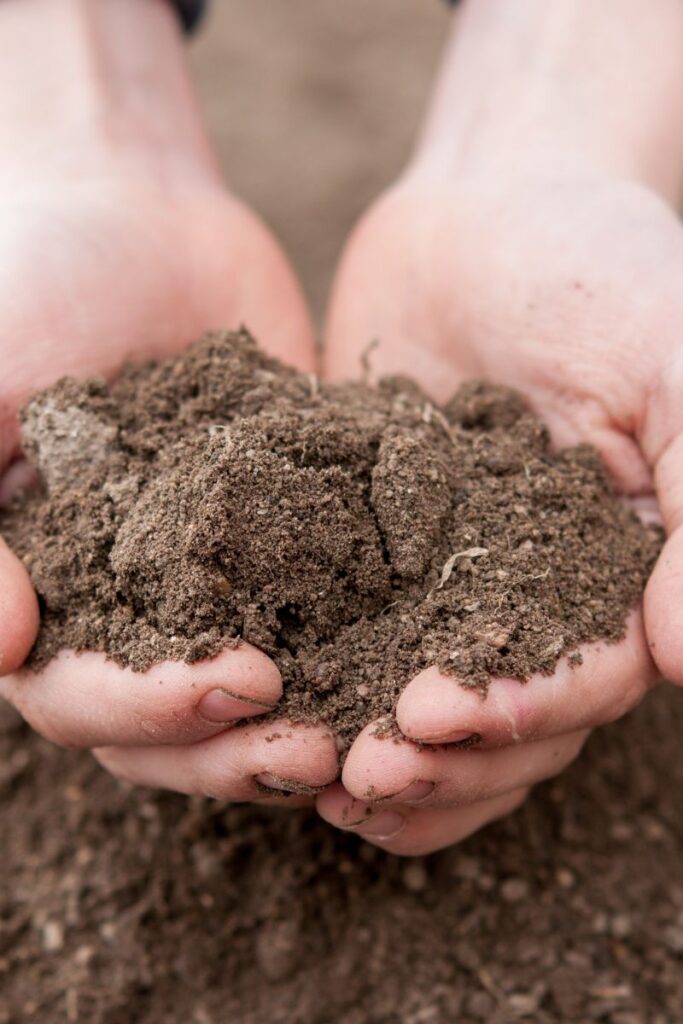
A Word About Preferred pH Levels in Pothos Soil
Maintaining proper pH levels in the soil is important for the health of your pothos plant. Pothos plants generally thrive in slightly acidic to neutral soil with a pH range of 6.0 to 7.0. If the soil pH is too low or too high, the plant may struggle to absorb nutrients from the soil. A pH level that is too low (acidic) can cause the leaves to yellow, while a pH that is too high (alkaline) can cause the leaves to turn brown and become brittle. To maintain the proper pH level for your pothos plant, it is recommended to periodically test the soil using a pH meter or test kit and adjust the pH level as needed using organic amendments such as lime, sulfur, or compost.
Maintaining proper pH levels in the soil is important for the health of your pothos plant.

A Match Made in Soil Heaven: What Your Pothos Plants Want in Their Perfect Soil Mix
When it comes to soil, pothos plants have a few key requirements:
- Good drainage: Pothos plants don’t like wet feet, so they need a soil mix with proper drainage holes to allow excess water to escape.
- Moisture retention: At the same time, pothos plants need enough moisture retention in their soil mix to keep their roots hydrated and healthy.
- Organic matter and essential nutrients: Pothos plants crave a nutrient-rich soil mix with plenty of organic matter to keep those leaves green and lush.
- Room to breathe: Pothos plants don’t like air pockets or compacted soil, so it’s important to give their roots some space to stretch out.
By catering to these requirements, you can create the perfect soil mix for your pothos plant to thrive. After all, a happy pothos means happy green leaves, and who doesn’t love a healthy and happy plant?
Achieving Ideal Soil Aeration for Pothos Plants
Pothos plants thrive in well-aerated soil. Aerated soil refers to soil that has sufficient air spaces or pores between its particles. These air pockets allow for the exchange of gases, particularly oxygen and carbon dioxide, between the soil and the plant roots. Adequate soil aeration is essential for Pothos root health and overall plant growth, as it ensures that roots receive the oxygen they need for respiration while also promoting good drainage and preventing waterlogged conditions.
The soil recipe below includes several ingredients designed to help with soil aeration such as coconut coir, orchid bark, sphagnum peat moss, perlite and coarse sand.
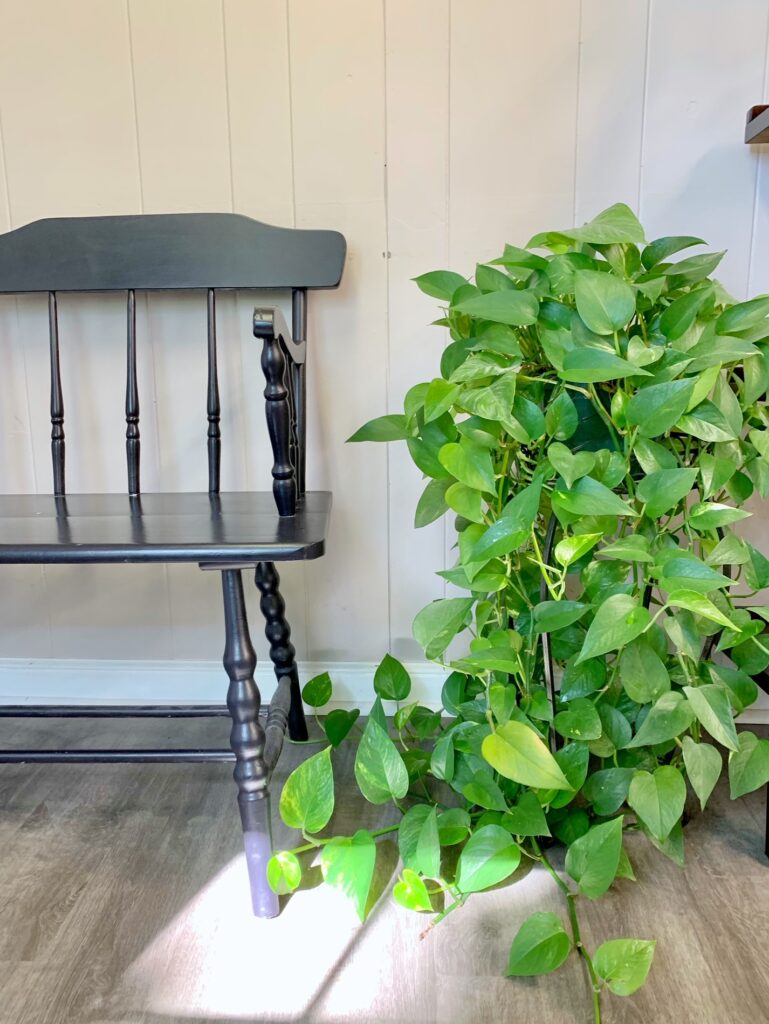
The Ultimate Pothos Soil Mix Recipe: Coco Coir, Orchid Bark, and More!
Now, let’s get into the recipe for the perfect pothos soil mix. The main ingredient in our mix is coconut coir, a sustainable alternative to peat moss. Coco coir has excellent moisture retention and good drainage, which makes it ideal for tropical plants like pothos.
Next, we’ll add orchid bark to the mix. This will help with drainage and soil structure, and prevent the soil from compacting over time. We’ll also throw in some sphagnum peat moss to improve moisture retention and soil structure.
To ensure good drainage, we’ll add perlite and coarse sand to the mix. This will prevent the soil from becoming too compacted and help with air pockets. We’ll also include horticultural charcoal to absorb excess moisture and prevent fungus gnats.
To make sure our pothos plants get enough nutrients, we’ll add some organic material such as horticultural charcoal, earthworm castings, coffee grounds, and pine bark. These will provide essential nutrients and act as a natural fertilizer for the plant. If horticultural charcoal sounds familiar to my readers it’s because we used this organic material in our terrariums.
Finally, we’ll mix in some synthetic fertilizer or fish emulsion to give the soil an extra boost during the growing season.

Step-by-step Instructions for Making The Ultimate Pothos Soil Mix Recipe
I say give ’em what they are looking for! To make your own pothos soil mix, follow these instructions:
- Start with a base of coco coir
- Add orchid bark, sphagnum peat moss, perlite, and coarse sand
- Mix in horticultural charcoal, earthworm castings, coffee grounds, and pine bark
- Add synthetic fertilizer or fish emulsion for an extra boost
- Mix everything thoroughly
Proportions and Measurements for the Ideal Pothos Soil Mix
Creating the perfect soil mix for your Pothos plant is like preparing a gourmet meal – it’s all about the right ingredients in just the right proportions. Let’s dive into the science of crafting the ultimate Pothos soil blend, exploring the exact measurements and components that will keep your plant thriving and flourishing.
- Coco Coir: Use 50-60% of your total mix as coco coir. This will serve as the primary base.
- Orchid Bark: Add 10-15% orchid bark to the mix to enhance aeration and drainage.
- Sphagnum Peat Moss: Include 10-15% sphagnum peat moss to improve moisture retention.
- Perlite: Add around 10-15% perlite to further enhance drainage and aeration.
- Coarse Sand: Incorporate about 5-10% coarse sand to improve drainage and aeration as well.
- Horticultural Charcoal: Use 1-5% horticultural charcoal to help with moisture control and prevent odors.
- Earthworm Castings: Add 1-5% earthworm castings for rich organic matter.
- Coffee Grounds: Use 1-2% coffee grounds to contribute to organic matter and acidity control.
- Pine Bark: Add 1-2% pine bark to enhance aeration and drainage further.
- Synthetic Fertilizer or Fish Emulsion: Depending on your preference, follow the recommended instructions on the product for the correct amount.
Be sure to mix everything thoroughly to create a well-balanced and nutrient-rich pothos soil mix.
Other Plants that will also Thrive in the Ultimate Pothos Soil Mix Recipe
- Philodendron – This plant is similar to pothos in terms of care requirements and will do well in the same soil mix.
- Spider plant – Spider plants prefer well-draining soil and can tolerate dry conditions, making them a great match for this soil mix.
- Peace lily – Peace lilies are low-maintenance plants that like moist soil, making this soil mix a good choice for them.
- Snake plant – Snake plants, also known as mother-in-law’s tongues, prefer well-draining soil and can tolerate dry conditions, making them a good choice for this soil mix.
- Chinese evergreen – Chinese evergreens prefer moist, well-draining soil and will thrive in this mix.
- Fiddle leaf fig – Fiddle leaf figs prefer well-draining soil that is kept consistently moist, making this soil mix a good choice for them.
- Rubber plant – Rubber plants prefer well-draining soil and can tolerate dry conditions, making them a good match for this soil mix.
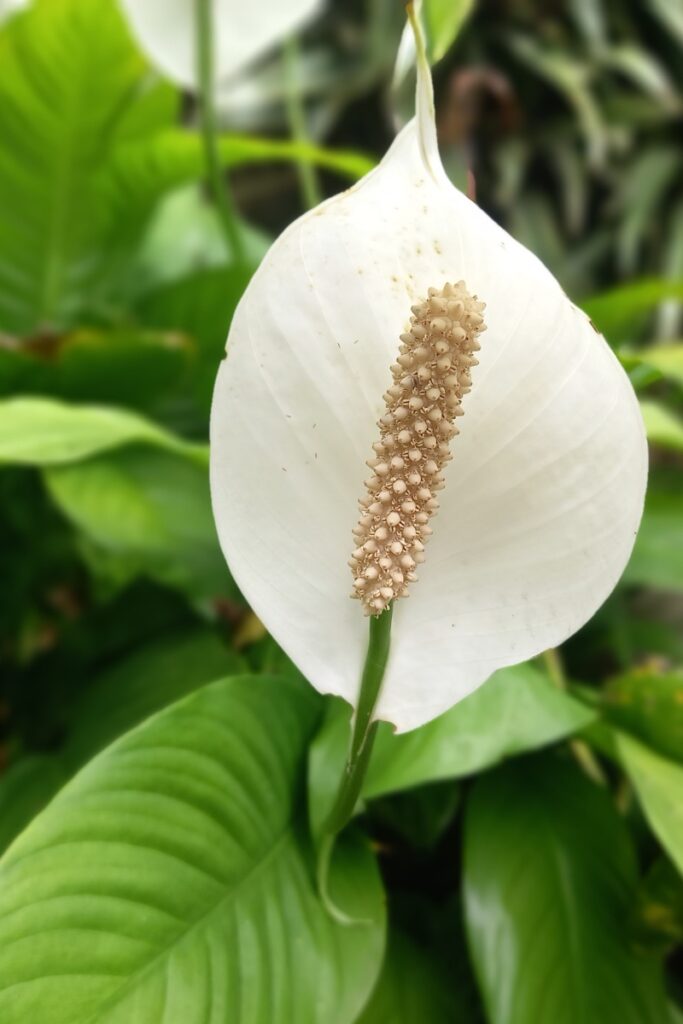
Pothos Potting 101: Size and Drainage Matters
When it comes to pot size, make sure to choose a pot that is slightly bigger than the plant’s root system. This will give the roots enough room to grow and prevent the soil from becoming too wet.
To get the best results, make sure to plant your pothos in a pot with good drainage holes at the bottom. This will ensure proper drainage and prevent the soil from becoming too wet. Also, make sure to water your plant enough but not too much. Allow the soil to dry out slightly before watering again.
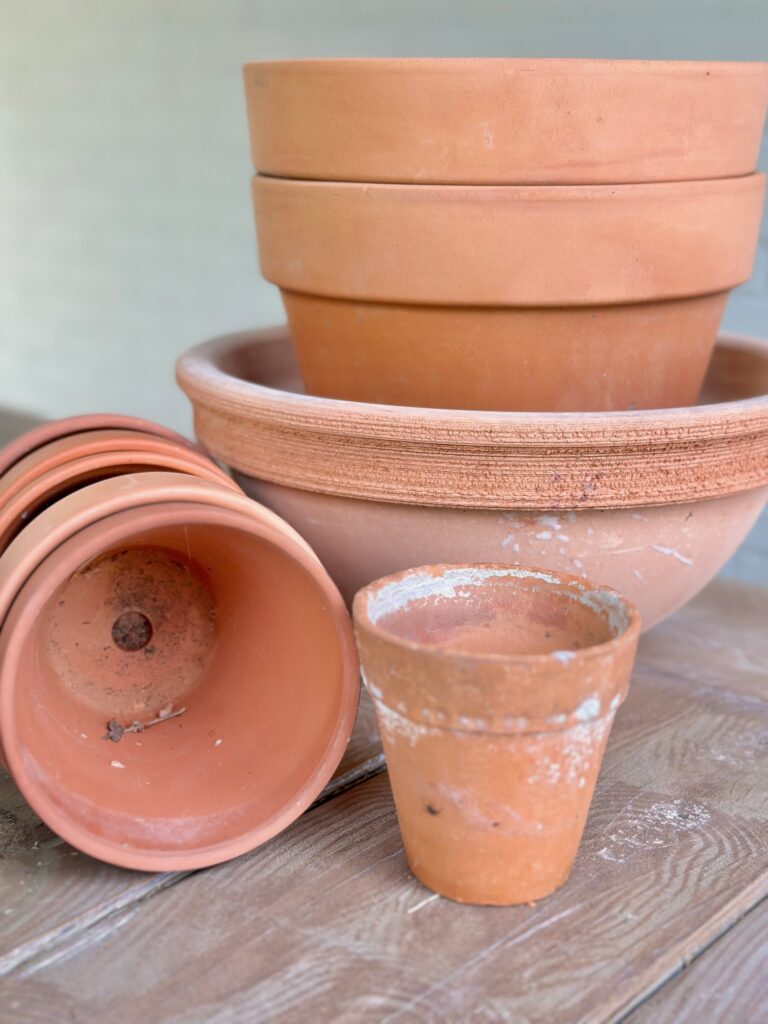
When to Repot your Pothos Plant
Ah, the eternal question: when should you give your beloved Pothos plant a new home? Well, it’s not rocket science, but it’s also not as simple as waiting for it to ask you for more space. Ideally, you should repot your Pothos plant when you notice its roots starting to poke out of the drainage holes3, or when it’s been a year or two since its last repotting. Don’t be fooled by its hardy nature – even the most low-maintenance plants like a bit of pampering every now and then. And trust me, your Pothos will thank you for giving it some extra legroom to stretch its roots and soak up more nutrients. Plus, it’ll be like moving to a bigger, better apartment – who wouldn’t want that?
Tip: Keep in mind that it’s beneficial to gradually increase pot sizes to prevent any shock to your plant.

Pre-mixed Soil Options
Looking for a hassle-free soil option for your pothos plant? Fear not, fellow plant parent! There are plenty of pre-mixed soil options available on the market that will make your life easier than ordering takeout on a Friday night. Whether you prefer a coco coir base or an organic blend with earthworm castings, there’s a soil mix out there that’s bound to satisfy your green thumb. Plus, with pre-mixed options, you won’t have to worry about getting the ratio of ingredients just right. It’s like having a personal chef for your pothos plant. So go ahead, take the easy route, and give your pothos the soil it deserves. Consider using Miracle-Gro indoor potting mix or Ocean Forest soil mix as a pre-mix option.
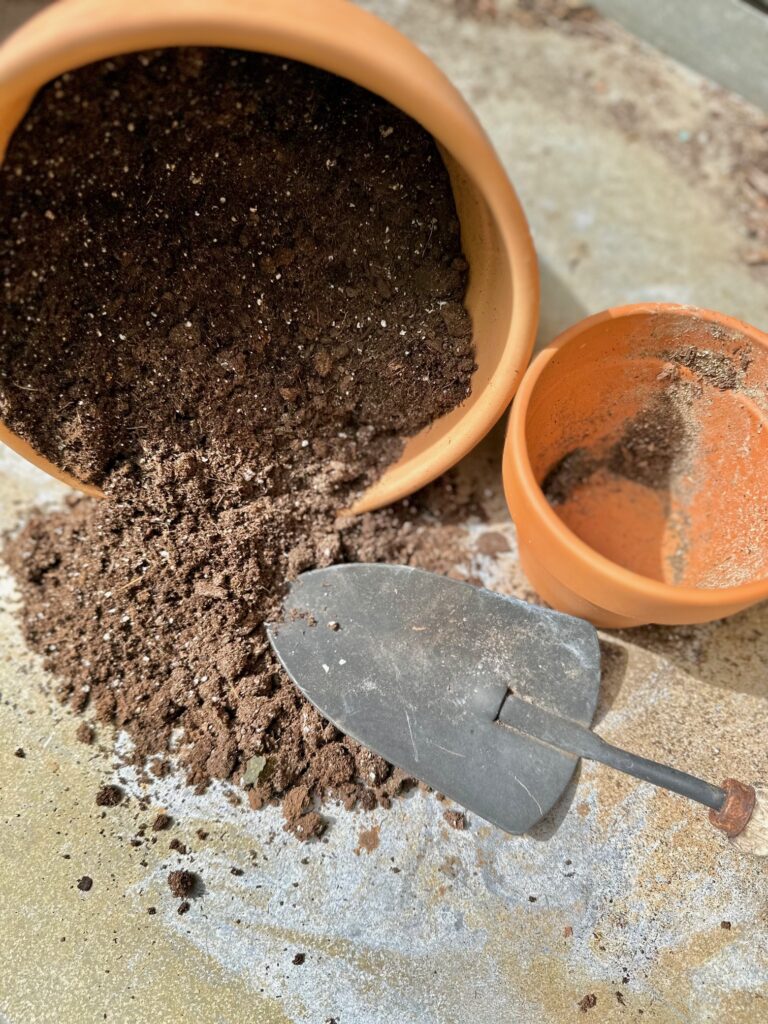
Frequently Asked Questions about Pothos Soil
Key signs you’re using the wrong potting mix for pothos include:
Excess moisture and poor drainage
Slow growth showing low nutrients
Yellow, drooping leaves signaling improper water retention
Soft leaf spots and damaged tissues from overwatering
Root rot due to overly wet, compacted soil
To fix issues, add amendments like bark and perlite for airflow. Replace mix fully with a chunky, aerated quality blend if problems continue. Getting an optimal soil foundation that drains sufficiently while retaining some moisture is vital for pothos health.
Pothos plants prefer a well-draining soil mix that is rich in organic matter and has good drainage. A mix that includes coconut coir, orchid bark, sphagnum peat moss, perlite, and coarse sand is ideal for pothos plants.
No, garden soil is not recommended for pothos plants as it may not provide the right kind of drainage and nutrients that they need. Garden soil can also contain pests and diseases that may harm your plant.
While succulent soil may have good drainage, it may not provide enough moisture retention or organic matter for pothos plants. It’s better to use a soil mix that is specifically tailored to the needs of pothos plants.
Yes, homemade fertilizer can be used for pothos plants. However, it’s important to follow the instructions carefully and not over-fertilize the plant as this can cause damage.
Pothos plants do not require frequent fertilization. It’s recommended to fertilize them once a month during the growing season using a balanced liquid fertilizer.
Yes, horticultural charcoal can be used in the soil mix for pothos plants. It helps to absorb excess moisture and prevent fungal growth in the soil.
Yes, coffee grounds can be added to the soil mix for pothos plants as they provide nutrients and improve soil structure. However, it’s important to use them in moderation as too much can make the soil too acidic. For more info on using coffee grounds as fertilizer visit my popular Which Indoor Plants Like Coffee Grounds (and how I use my Keurig to make fertilizer) post.
Pothos plants do not require frequent repotting. It’s recommended to repot them every 2-3 years or when the roots start to outgrow the pot.
This depends on where you buy your pothos plant. Some nurseries and plant stores may sell pothos plants already potted in a specialized soil mix that is suitable for their growth. However, if you buy your pothos plant from a general store or online, it may come in a standard potting mix that may not be ideal for the plant’s growth. It’s always a good idea to check the soil composition and consider repotting your pothos in the ultimate pothos soil mix recipe included in this post to ensure optimal growth and health.
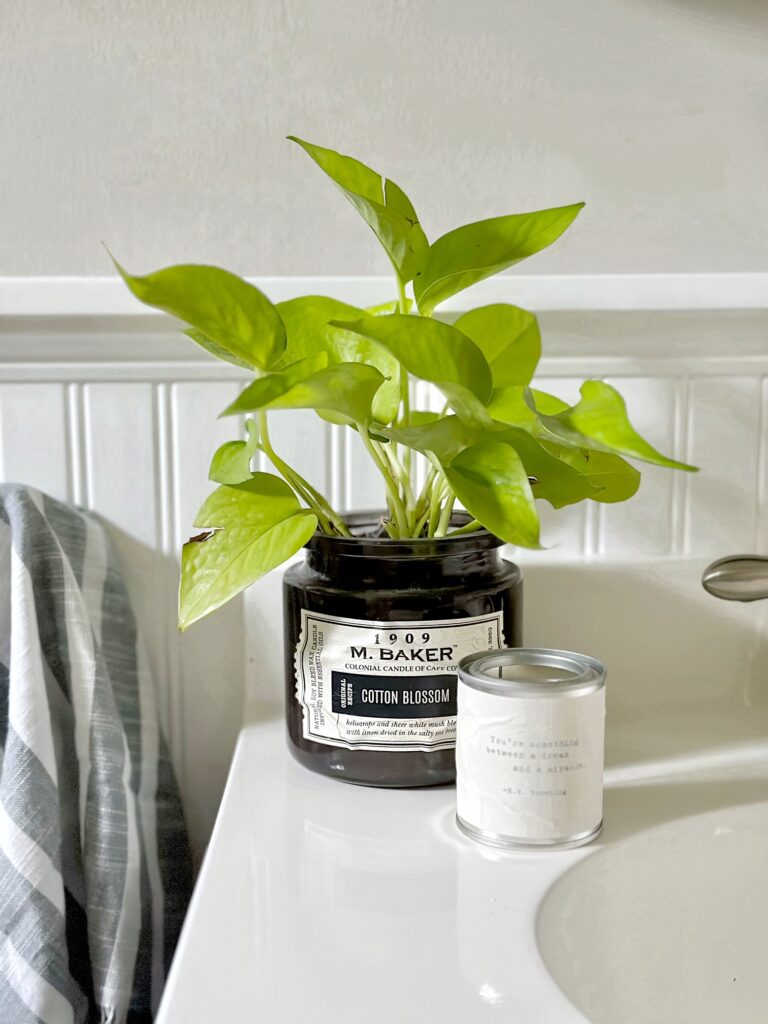
Finding the right potting mix for your pothos is crucial for their growth and overall health. Follow our recipe for the best pothos soil mix or experiment with your own mix using the ingredients we’ve mentioned. Visit your local garden center for more soil amendments and wetting agents to perfect your soil type, and give your pothos the best chance for a long and healthy life. And don’t forget, pothos plants thrive in indirect light and tropical climates, so find the perfect spot for your new pot or hanging basket!
For more Pothos plant care posts visit:
How to Plant Pothos Cuttings: A Simple Step-by-Step Guide: In this post, “How to Plant Pothos Cuttings: A Simple Step-by-Step Guide,” readers are guided through the process of successfully propagating pothos cuttings, from selecting and rooting them in water or soil to potting them into permanent containers. The comprehensive guide covers essential steps, tips, and troubleshooting, making it an easy and rewarding experience for both beginners and plant enthusiasts.
How Often Should I Water a Pothos Plant? : This post is a guide for new Pothos Plant parents who need guidance on how to care for their plants. It covers proper care for Pothos Plants, including watering, lighting, pruning, propagating, and fertilizing.
Choosing the Best Fertilizer for Pothos Plants: A Guide: This blog post is about making natural and organic fertilizers for indoor plants using household items. It explains the benefits of homemade fertilizers over commercial ones and why indoor plants need to be fertilized.
I trust that DIY Pothos Soil Mix Recipe: Growing Gorgeous Pothos post has provided you with the information you were seeking to provide your beloved green companions with the best soil mixture available. Thanks for visiting the blog today, I love it when you do!
Keep Growing friends!





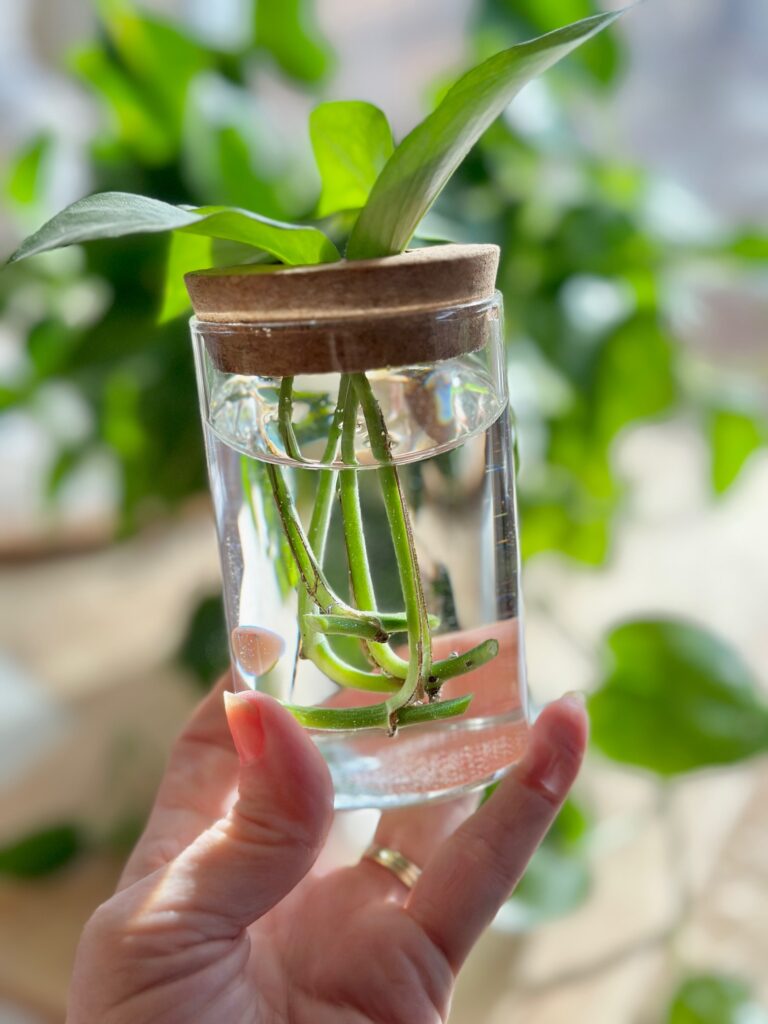
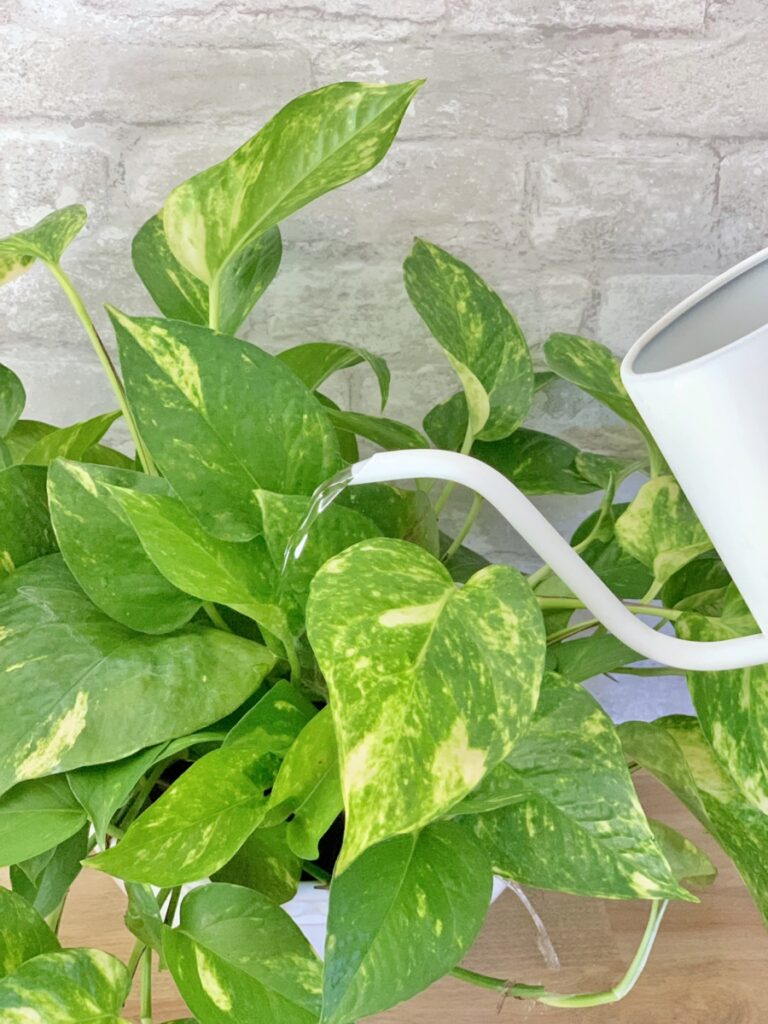




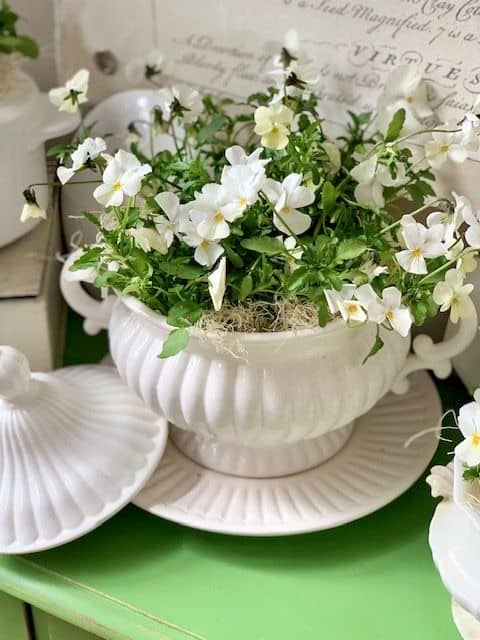
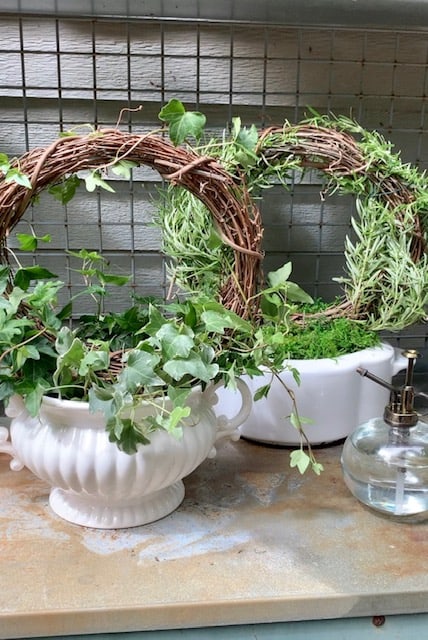
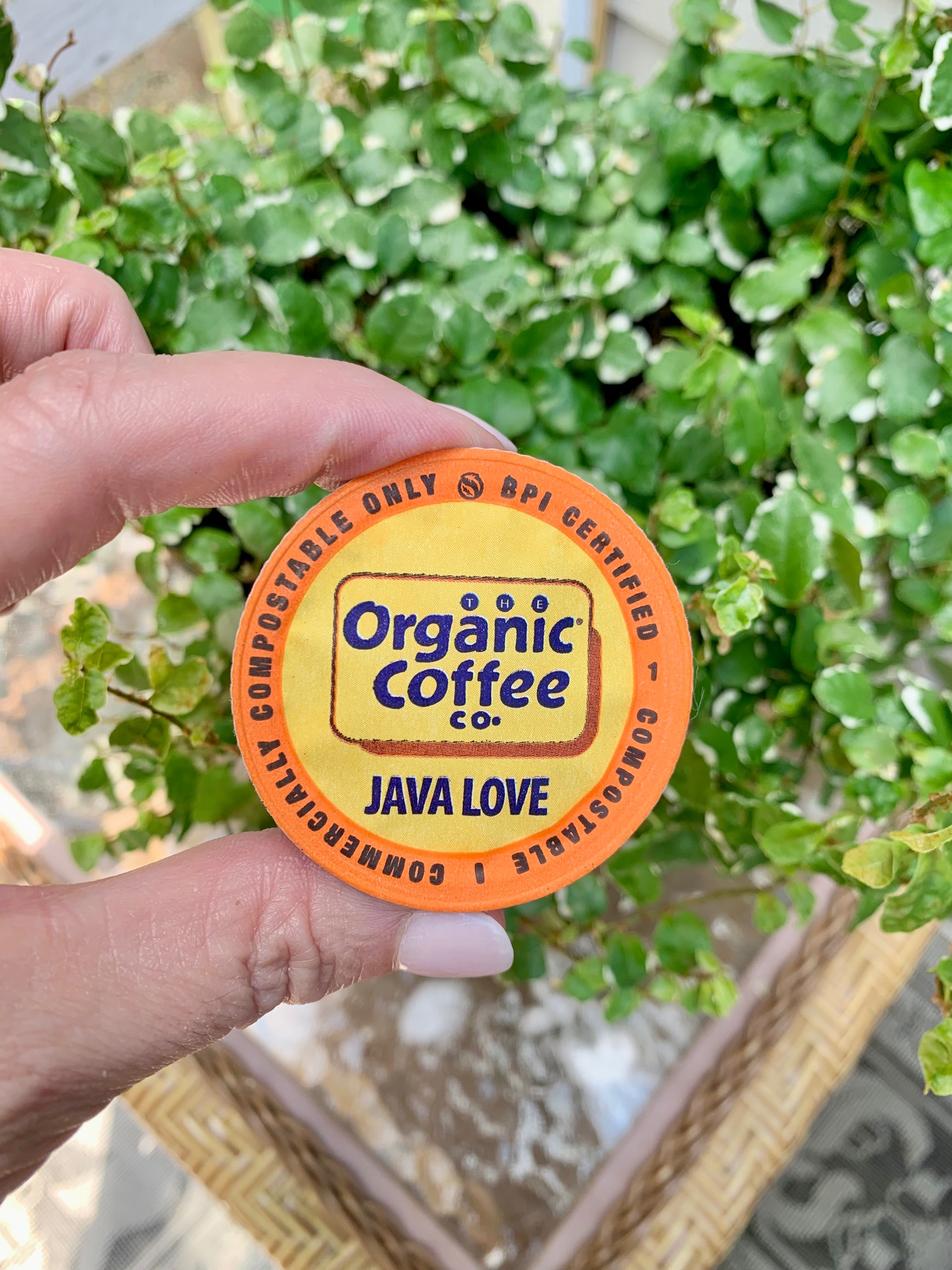
Can you explain the amount of each ingredient you would use in this mix? Percentages or some kind of amount of each? Not sure how you would measure each ingredient. Thanks.
Hi Dayna,
Thank you for visiting the blog. I would suggest the following:
Coco Coir: Use 50-60% of your total mix as coco coir. This will serve as the primary base.
Orchid Bark: Add 10-15% orchid bark to the mix to enhance aeration and drainage.
Sphagnum Peat Moss: Include 10-15% sphagnum peat moss to improve moisture retention.
Perlite: Add around 10-15% perlite to further enhance drainage and aeration.
Coarse Sand: Incorporate about 5-10% coarse sand to improve drainage and aeration as well.
Horticultural Charcoal: Use 1-5% horticultural charcoal to help with moisture control and prevent odors.
Earthworm Castings: Add 1-5% earthworm castings for rich organic matter.
Coffee Grounds: Use 1-2% coffee grounds to contribute to organic matter and acidity control.
Pine Bark: Add 1-2% pine bark to enhance aeration and drainage further.
Synthetic Fertilizer or Fish Emulsion: Depending on your preference, follow the recommended instructions on the product for the correct amount.
Be sure to mix everything thoroughly to create a well-balanced and nutrient-rich pothos soil mix. I hope this helps to clarify!